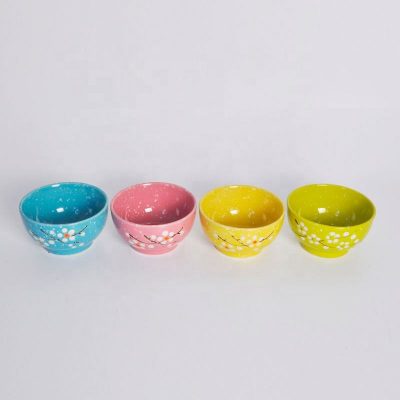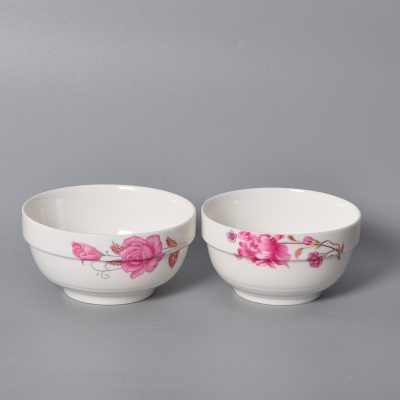(1) Classification according to the type of porcelain: currently on the market there are mainly daily-use porcelain, bone ash porcelain, Linglong daily-use porcelain, underglaze (medium) color daily-use porcelain, daily-use fine pottery, ordinary ceramic cooking utensils and fine ceramic cooking。 Daily-use ceramics (the bone ashes has only one grade) are classified into high-quality, first-class, and qualified products according to the number of appearance defects or the magnitude of the defects.
(2) Classification according to the decoration method of the flower surface: According to the characteristics of the flower surface, it can be divided into over-glaze, mid-glaze, under-glaze and colored glaze porcelain, and some uncolored white porcelain.
On-glaze ceramics are products made by sticking decal paper made of over-glaze ceramic pigments on the glaze or directly painted on the surface of the product with pigments, and then baked at 700-850°C. Because the firing temperature does not reach the melting temperature of the glaze layer and the non-in-glaze ceramic pigments are used, the flower surface cannot sink into the glaze, but can only stick to the surface of the glaze layer. If you touch the surface of the product with your hands, there is a sense of protrusion in the decoration, and observe the unevenness with naked eyes.
The firing temperature of in-glaze ceramics is higher than that of the overglaze, reaching the melting temperature of the glaze of the product. The ceramic pigment sinks into the glaze when the glaze is melted, and is covered by the glaze layer after cooling. The surface of the product is smooth as glass, basically without unevenness.
Underglaze ceramics is a traditional decoration method in my country. All the decorations of the products are carried out on the porcelain blanks. After glazing, they are fired at a high temperature. This product is the same as the in-glaze color. The flower surface is covered by the glaze layer and the surface is bright. , Flat, smooth surface of the product touched by hand, sometimes there is a feeling of depression in the decoration.
In colored glaze porcelain, a high-temperature color agent is added to the ceramic glaze to make the glaze surface of the fired product show a certain color, such as yellow, blue, and bean cyan.
White porcelain usually refers to ceramics without any color decoration.







